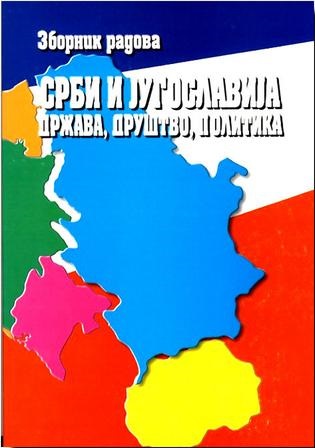Школовање Чеха и Словака у Србији 1945–1958.
Education System of the Czechs and Slovaks in Serbia 1945–1958
Author(s): Slobodan Selinić
Subject(s): Social history, History of Education, WW II and following years (1940 - 1949), Post-War period (1950 - 1989), Ethnic Minorities Studies, Sociology of Education
Published by: Institut za noviju istoriju Srbije
Keywords: Yugoslavia; Czechoslovakia; Serbia; education; Czechs and Slovaks;
Summary/Abstract: Taken together, the Czech and the Slovak minorities were the third largest minority group in Serbia and Yugoslavia after the Second World war, only the Albanian and Hungarian ones being larger. According to the 1948 census, 39.015 Czechs and 83.626 Slovaks lived in Yugoslavia. Out of that number, 6.760 Czechs and 73.140 Slovaks lived in Serbia. As a national minority, the Czechs and Slovaks had the right to education in their mother tongue in communities they inhabited. The post-war development of the Yugoslav society brought about also the increased number of schools of the Czech and Slovak minorities. There were 42 Czech and Slovak elementary schools with 7.480 pupils and one secondary school with 516 students in 1938/39. There were 19 Czech and 35 Slovak primary schools in 1955/56 with 6,319 pupils, two Czech and 15 Slovak eight-class and secondary schools with 2,842 pupils and one Slovak teachers training college with 56 students. These schools lacked schoolbooks and teachers, some of whom were insuffi ciently trained, even though the Yugoslav state tried to train teachers for minority schools too in its educational system. This lack of teachers was partly alleviated by bringing teachers from Czechoslovakia. Part of the young Czechs and Slovaks decided to continue their education after having finished secondary schools, i.e. they decided to acquire academic education. The place of living infl uenced also the place of study. The Czechs turned mostly to Zagreb, and the Slovaks to Belgrade and Novi Sad. In 1955/56 the largest number of the Czechs and the Slovaks were to be found in the lecturerooms of the Faculty of Arts, Economic, Legal and Medical faculties. One of the best known Czech schools in Serbia was the Masaryk School in Belgrade (Československá škola Masarykova v Bělehradě) which had its premises in the Czechoslovak House. The importance of this school went far beyond the number of pupils (some 30) attending it. This school was a focal point for Czechoslovak children, youths, intellectuals, elite and diplomats. It contributed to good relations between the Czechoslovak colony in Belgrade and the Belgrade, Serbian and Yugoslav society, it fostered national culture, language, music costumes, history, it aided the young Czechs and Slovaks in preserving their mother tongue, memory of their mother-country and the history of which they were part, it helped the Czechoslovak community adapt more easily to great political changes in the post-war Yugoslavia. The headmaster was a teacher from Czechoslovakia Augustin Streit. The school enjoyed large support of the Czechoslovak Embassy in Belgrade and Czechoslovak minority associations (Československá obec and Udruženje čehoslovačkih žena) and it also received aid from the Czechoslovak Ministry of Schools and Education and from several individuals. It was shut down in early 1950s as the Yugoslav-Czechoslovak relations deteriorated.
Book: Срби и Југославија. Држава, друштво, политика
- Page Range: 327-347
- Page Count: 21
- Publication Year: 2007
- Language: Serbian
- Content File-PDF

